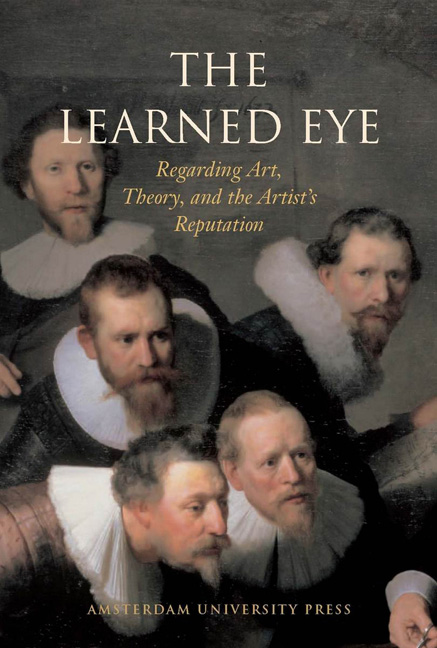Crossing the Wall of History. Etienne Delécluze on the Art and Morality of Jacques-Louis David
Published online by Cambridge University Press: 25 January 2021
Summary
For recent centuries we have a choice variety of tools at our disposal to prove that this or that event indeed occurred at such and such a time, and the wonderful side-effect of these tools is that they give us more information than we explicitly asked for. Thus on the day when Queen Mother Juliana died, many films were shown, giving astonishing evidence of the changes in the way people behaved only fifty-odd years ago. For one thing the way they moved from A to B was quite different from ours – stiffer, in a way, less fluent, as if they were more self-conscious and at the same time less aware of their own appearance.
Around 1900, 1910, the film recording abruptly breaks off, leaving us to guess how the history of homespun reality would evolve further into the recesses of time. We are left to assume that before the twentieth century people used to move and sound the way they did in the old films, or differently again, in ways we simply cannot know. They remain discreetly hidden behind the wall of time, behind the last glimpses on celluloid, murky scraps of older times helpfully reminding us that the differences between the past and the present lurk in the most unexpected little corners.
For any historian setting out to compose a reconstruction of some past phenomenon this can be a very daunting fact. Art historians in one sense have the advantage that their field of study remains restricted between clear and material parameters: the production of works of art, many of which are still among us. Yet whatever we attempt, the person who made these wonderful objects remains ‘a distant stranger long since returned to dust’. This is how Van de Wetering characterized the main subject of his own exploring efforts during almost forty years. As we know this particular stranger was also one of the most famous inhabitants of our part of the world, ever.
Of course the whole field of art history is populated with distant shadows hovering uneasily behind the legacy in our museums, and this puts a sobering perspective on the time and again recurring imperative ‘to put an artist in his time’.
- Type
- Chapter
- Information
- The Learned EyeRegarding Art, Theory, and the Artist’s Reputation, pp. 151 - 157Publisher: Amsterdam University PressPrint publication year: 2005



